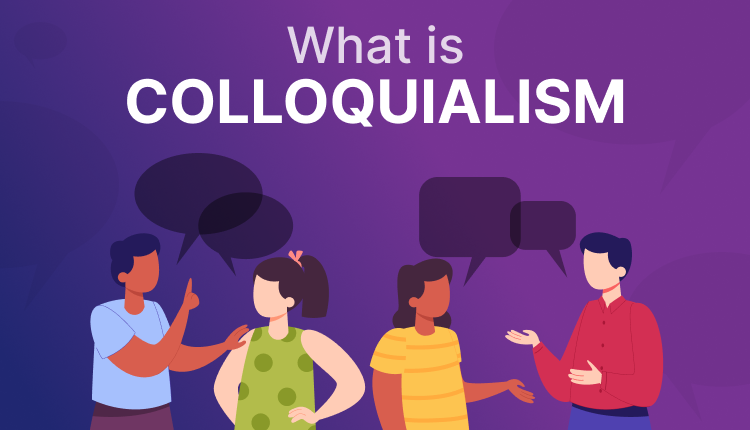Language is a living, breathing entity. It evolves with us, shapes our identities, and reflects our cultures. And in this continuous process of evolution, perhaps one of the most interesting aspects is colloquialism—a term covering informal words and phrases we use in everyday talk. These linguistic jewels add flavor to our speech and help convey emotion or familiarity.
But what exactly is a colloquialism? What influence does it bring to communication? Let’s delve into this very interesting topic, getting a better acquaintance with it through definitions, examples, and daily applications!
Definition of Colloquialism
Colloquialism refers to informal language that is quite often specific to a given region or community. Phrases, expressions, and slang people often use in everyday conversation are some examples of colloquialisms.
They can bring a lot about the origins, culture, and society of a person. They make written communication more real and lively.
Colloquialisms are far different from formal language because they are more casual in nature and often don’t follow proper grammatical flow. This casual nature allows them to communicate feelings and even creates a bond between speakers.
For example, using “gonna” instead of “going to” creates a friendly atmosphere. It is these subtle things that make our communication lively and confusing for people who are not familiar with it.
What occasions use colloquialism?
Colloquialism occurs in regular conversations. It is the speech we utter during a dialogue with friends or family members. The informal nature of this style brings a personal feel to our communication.
You will usually find this kind of phrasal colloquial in a coffee shop or in any other informal setting. They add a feeling of an easy-going atmosphere, so the speech sounds much more natural.
In literature, authors use colloquial expressions both to develop characters and to describe the environment. The dialogue written like everyday speech is highly attractive to the reader.
These idioms are also used in the various forms of media—movies, television shows, and even podcasts where they make people more relatable and genuine. There’s an instant relationship whenever the same colloquialism comes into use among the audiences.
Some examples of English colloquialisms and meanings
English is very full of colloquialisms that make it sound lively. Here are a few excellent examples.
“To bite the bullet” is to put up with something unpleasant. It is often said when someone is bound to confront an unpleasant situation.
Another one is “break the ice.” It relates to breaking into conversation in awkward social situations, making every person feel at ease.
Then there is “hit the hay,” referring to sleeping. This paints a homely picture of settling in after a long night’s ordeal.
“Spill the beans” encourages someone to reveal secrets or secrets kept that would be of significant interest. There is some excitement in this phrase.
Lastly, “piece of cake” is something very easy to do. It adds sweetness to talk about jobs and challenges!
These idioms and expressions depict how language keeps on growing and changing in various contexts yet with zest and life.
Examples of Colloquialisms in Literature and Everyday Speech
Colloquialisms infuse a breath of fresh life into both literature as well as everyday speech. They encapsulate the very spirit of culture, giving it that feel of relatability and genuineness.
In Mark Twain’s “The Adventures of Huckleberry Finn, “all characters explain themselves through regional dialects of their background. For instance, variations like “ain’t” or “gonna” make great impressions on the readers.
Colloquialisms, even in day-to-day talks, are thriving. Like “to kick the bucket,” death is referenced without being gloomy. It is more or less a humble and gentle approach to sensitive matters.
These idioms do not only come closer to us but also keep our style alive and exciting for expression!
Benefits and Drawbacks of Using Colloquial Language
Colloquial language can provide a type of authenticity to communication. As the colloquial lingo is used, people get the feeling that the interaction is more familiar with one another.
On the contrary, the colloquial nature may lead to misunderstanding because people come from different backgrounds and familiarity with certain expressions may vary. It can bring confusion in conversations.
Although colloquial language can play an important role in creative writing, it may compromise the logical conclusion of a written essay or report. The formal tone used in the paper is primarily favored by readers in academia for its clarity and professionalism.
But an informal expression may give more depth to your characters’ voices in creative writing. Readers connect with real-speaking characters better.
Effective use of a colloquialism has the important ingredient associated with it: too little and too much. It’s upon knowing when to do it that you will determine how great it affects your readers.
Compare and contrast colloquial language with slang. Colloquial language is informal expressions which are characteristically the usual expressions for ordinary communications. Usually, the new expressions express regional dialects or cultural influences. Slang consists of more specific terms, usually not widely known outside of groups.
Frequently Asked Question on Colloquialism
Is the colloquial expression changing?▼
Yes, they can evolve with the times. Slang becomes extinct as others do. This lends to language a fluidity that, at its best, imitates the contemporary culture.
Are colloquialisms appropriate for use in an academic journal?▼
In general, colloquialisms are not typically used in formal scholarship writing. Clarity and professionalism reign supreme; however, they would probably work well to explicate literature or when using cultural context when composing.
How do I know if something is a colloquialism?▼
Look for words and phrases that don’t sound formal. If it sounds like something you’d hear in casual chatter with your friends, then it’s probably a colloquialism.
Can using colloquialisms make my writing better?▼
Absolutely! Used judiciously, they make your dialogue sound real and alive. They flavor characters in fiction or lend an air of realism to narrative nonfiction. That is what makes our appreciation of the diversity of language and its role in communication in various contexts rich and more meaningful.

